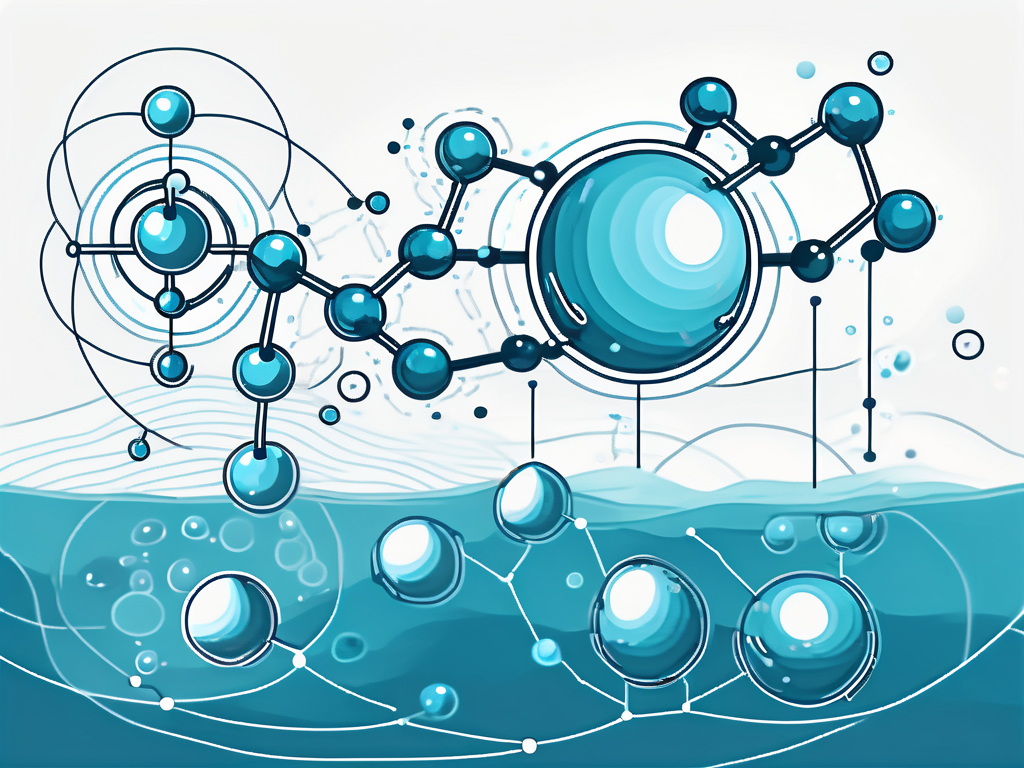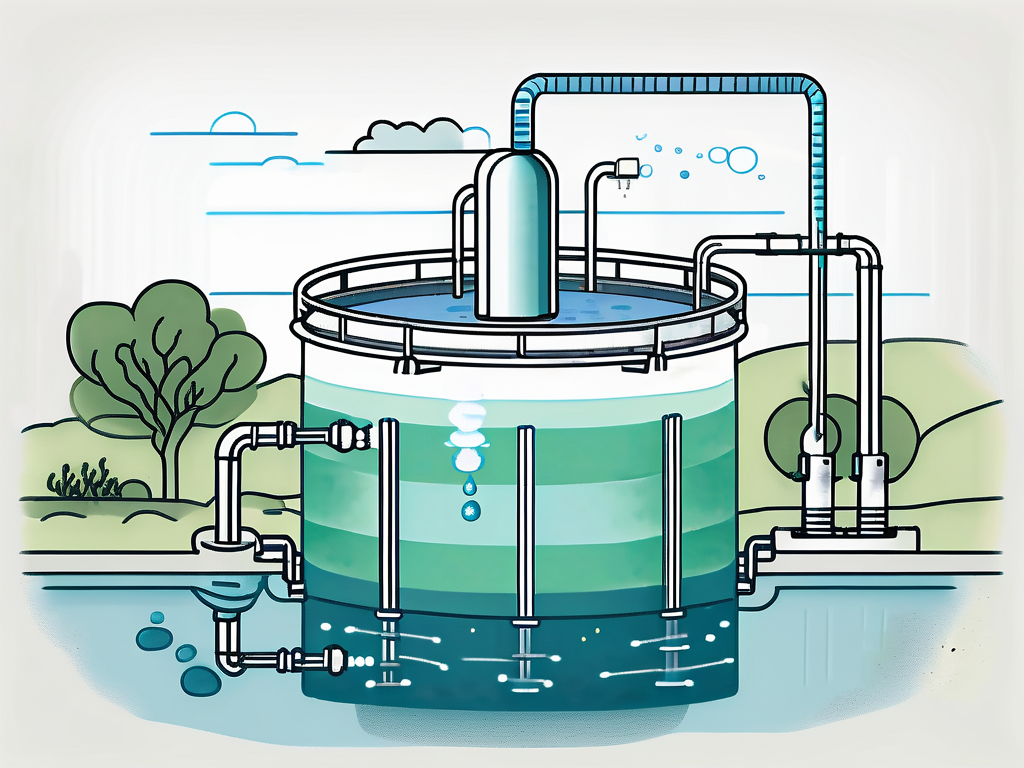
Ozone Disinfection: Wastewater Treatment Explained
Wastewater treatment is a critical process that ensures the safety and cleanliness of water released back into the environment. One of the most effective methods of disinfection used in this process is ozone disinfection. This article will delve into the intricacies of this process, its benefits, and its role in wastewater treatment.
Ozone disinfection is a method that uses ozone, a powerful oxidant, to destroy bacteria, viruses, and other harmful substances in water. This method is widely used in wastewater treatment due to its effectiveness and efficiency. This article will provide a comprehensive understanding of the process, its applications, and its significance in maintaining environmental health.
Understanding Ozone
Ozone is a naturally occurring gas composed of three oxygen atoms. It is a powerful oxidant that can react with a wide range of substances, making it an effective disinfectant. In the atmosphere, ozone plays a crucial role in protecting life on Earth by absorbing harmful ultraviolet radiation from the sun.

Despite its beneficial role in the atmosphere, ozone at ground level can be harmful to human health and the environment. Therefore, its use in disinfection processes must be carefully controlled and monitored to ensure safety.
Production of Ozone
Ozone is produced for disinfection purposes through a process called electrical discharge. This involves passing a high voltage electric current through a gas that contains oxygen. The electric current causes the oxygen molecules to split into individual oxygen atoms, which can then combine with other oxygen molecules to form ozone.
The produced ozone gas is then bubbled through the water to be disinfected, where it reacts with harmful substances and destroys them. The efficiency of ozone production and its effectiveness as a disinfectant depend on several factors, including the quality of the oxygen gas used, the design of the ozone generator, and the conditions under which the process is carried out.
Properties of Ozone
Ozone is a highly reactive and unstable gas. It readily gives up one atom of oxygen to form regular oxygen, a process known as oxidation. This property makes it a powerful disinfectant, as it can oxidize and thereby destroy a wide range of harmful substances in water.
However, the reactivity of ozone also means that it has a short half-life and cannot be stored for long periods. Therefore, it must be produced on-site and used immediately for disinfection. This necessitates the use of specialized equipment and careful process control in wastewater treatment plants.
Ozone Disinfection Process
The ozone disinfection process involves the application of ozone to wastewater to destroy harmful substances. The process can be divided into three main stages: ozone generation, ozone contact, and ozone destruction.
Each stage is critical to the effectiveness of the disinfection process and requires careful control and monitoring. The following sections will provide a detailed explanation of each stage.
Ozone Generation
The first stage of the ozone disinfection process is the generation of ozone. This is typically done using an ozone generator, which produces ozone by passing a high voltage electric current through a gas that contains oxygen.
The quality of the oxygen gas used and the design of the ozone generator can significantly affect the efficiency of ozone production. Therefore, these factors must be carefully considered in the design and operation of the disinfection process.
Ozone Contact
Once the ozone has been generated, it must be brought into contact with the wastewater to be disinfected. This is typically done by bubbling the ozone gas through the water in a contact chamber.
The design of the contact chamber and the contact time (the time the ozone is in contact with the water) are critical factors that affect the effectiveness of the disinfection process. These factors must be carefully controlled to ensure that all harmful substances in the water are destroyed.
Ozone Destruction
After the ozone has reacted with the harmful substances in the water, any remaining ozone must be destroyed before the water is discharged back into the environment. This is typically done using an ozone destructor, which converts the ozone back into regular oxygen.
The destruction of ozone is a critical step in the disinfection process, as residual ozone can be harmful to aquatic life and the environment. Therefore, this step must be carefully monitored to ensure that all residual ozone is effectively destroyed.
Benefits of Ozone Disinfection
Ozone disinfection offers several benefits over other disinfection methods. One of the main benefits is its effectiveness against a wide range of harmful substances, including bacteria, viruses, and organic and inorganic compounds.

Another significant benefit of ozone disinfection is that it does not produce harmful by-products, unlike other disinfection methods such as chlorination. This makes it a more environmentally friendly option for wastewater treatment.
Effectiveness Against Pathogens
Ozone is highly effective against a wide range of pathogens, including bacteria, viruses, and protozoa. Its high oxidation potential allows it to destroy these organisms by damaging their cell walls and inactivating their enzymes and proteins.
Moreover, ozone is effective against pathogens that are resistant to other disinfectants, such as Cryptosporidium and Giardia. This makes it a valuable tool in ensuring the safety of treated wastewater.
No Harmful By-Products
Unlike other disinfection methods, ozone disinfection does not produce harmful by-products. Chlorination, for example, can produce disinfection by-products (DBPs) such as trihalomethanes and haloacetic acids, which are harmful to human health and the environment.
In contrast, the main by-product of ozone disinfection is regular oxygen, which is harmless. This makes ozone disinfection a more environmentally friendly option for wastewater treatment.
Challenges and Considerations
While ozone disinfection offers many benefits, it also presents several challenges and considerations. These include the high cost of ozone generation, the need for specialized equipment and skilled personnel, and the potential risks associated with the handling and use of ozone.
Despite these challenges, the benefits of ozone disinfection often outweigh the drawbacks, making it a valuable tool in wastewater treatment. The following sections will discuss these challenges and considerations in more detail.
Cost and Infrastructure
The cost of ozone generation can be high, as it requires a significant amount of energy. Moreover, the need for specialized equipment and skilled personnel can add to the overall cost of the disinfection process.
However, these costs can often be offset by the benefits of ozone disinfection, such as its effectiveness against a wide range of pathogens and its lack of harmful by-products. Therefore, the cost and infrastructure requirements should be carefully considered in the context of the overall benefits of the process.
Safety Considerations
Ozone is a powerful oxidant and can be hazardous if not handled properly. It can cause respiratory irritation and other health problems in humans, and it can be harmful to aquatic life and the environment if not properly destroyed after use.
Therefore, the handling and use of ozone must be carefully controlled and monitored to ensure safety. This includes the use of appropriate personal protective equipment, the implementation of safety procedures, and the regular monitoring of ozone levels in the workplace and in the treated water.
Conclusion
Ozone disinfection is a powerful and effective method for treating wastewater. It offers several benefits over other disinfection methods, including its effectiveness against a wide range of pathogens and its lack of harmful by-products. However, it also presents several challenges and considerations, including the high cost of ozone generation and the need for specialized equipment and skilled personnel.
Despite these challenges, the benefits of ozone disinfection often outweigh the drawbacks, making it a valuable tool in wastewater treatment. By understanding the intricacies of the process and carefully considering the associated challenges and benefits, wastewater treatment plants can effectively use ozone disinfection to ensure the safety and cleanliness of treated wastewater.



